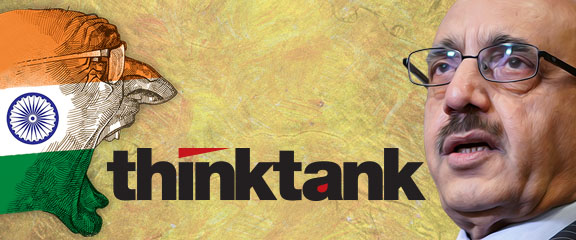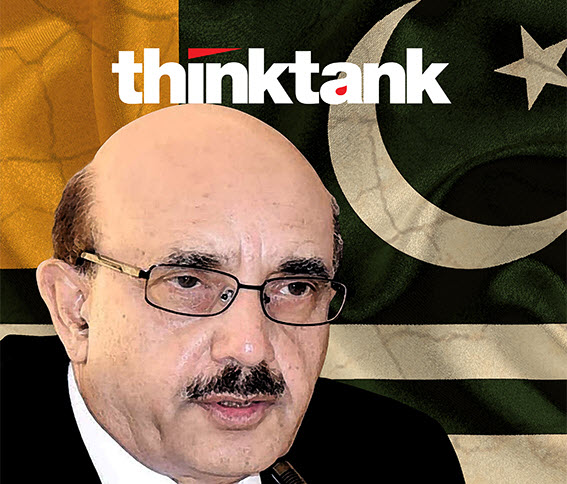Gone are the days when traditional diplomacy used to work.
Modern diplomacy, more or less in its present form, began in the early 19th century when the Congress of Vienna was convened in 1814-15 to define balance of power, address bilateral and international problems and codify rules for interstate diplomacy. Initially, this model of diplomacy was state-centric, with a clear distinction between major powers and states with “limited interests.” This was followed by the emergence of the Concert of Europe comprising Austria, Britain, Russia and Prussia as an embryonic form of multilateral governance for cooperation. After the Second World War, the United Nations heralded a new era of full-fledged multilateralism supported by the Bretton Woods Institutions and specialised agencies, with the five permanent members of the UN Security Council sitting at the apex decision-making seats. The diplomats were stereotyped as male, pinstriped cookie-pushers.
No more. Now diplomats act more like entrepreneurs or CEOs of start-ups to get traction for their nation, facing stiff competition. The world has changed because of globalisation driven by post-industrial and digital revolutions. Three matrices still project national power: military strength, economic development and human security.
The diplomats’ tasks have been redefined drastically. But two home truths need to be underlined: diplomacy and foreign policy are not synonymous; and foreign policy begins at home. Let me elaborate.
First, diplomacy is one of the instruments of foreign policy meant to promote and protect the national interest, resolve differences by means of dialogue and negotiations, in most cases discreetly and behind the scenes. It is of course backed by national power, overtly or covertly. Foreign policy, on the other hand, adopts a declared broader and comprehensive strategy to pursue peace and war, combat transnational threats and work for global commons.
Second, the efficacy of diplomatic outreach and productivity suffer if internal polity, economy and social fabric are chronically volatile and fragile. Domestic policy and foreign policy have to move in tandem.
This does not, however, reduce the burden of the responsibilities of Foreign Offices and missions abroad in advancing the interests of their nations, especially when the going is rough at home. It is then that we have a challenge to turn things around by making the best use of bilateral ties and multilateral forums. Many nations, during wars and even after defeats, have turned the tide for their nations by employing astute diplomacy.
The net result of our foreign policy strategy and diplomatic efforts will revolve around three questions: Will we attract more foreign investment and promote trade? Will we reinforce our national security? And lastly, are we being seen as a polity trying to promote and protect human rights, counter violent extremism and terrorism and shape a tolerant, pluralist and inclusive society?
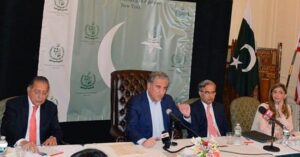
The economy is our absolute priority; our strategic compass.
Even the most conservative foreign estimates for Pakistan’s GDP growth for 2021-22 range from 3.2 to 3.5 percent (according to the Economist Intelligence Unit and the World Bank, respectively), but the government’s forecasts are higher, up to 5 percent. This is not bad at all, after the beating our economy received from the COVID-19 pandemic. Compared to other developing nations, Pakistan has dealt with the pandemic quite effectively, with a combined strategy of smart lockdowns, vaccinations, cash transfers, fiscal stimulus packages and continuing business activity. The result is that the economy is poised to rebound.
There are other positive indicators too. Foreign remittances, investment and industrial production have increased; and the services sector has performed well. Our challenges are inadequate revenue generation as well as the decline in exports and agricultural produce.
Although the Morgan Stanley Capital International (MSCI), in September 2021, reclassified Pakistan from an Emerging Market to a Frontier Market, it acknowledged that Pakistan’s equity market meets the criteria for market accessibility for emerging markets but not of size and liquidity. As the growth rate increases and foreign investments flow in, we should address these problems.
Let me reiterate that trade and investment are the very essence of diplomacy.
Pakistan is giving primacy to geoeconomics. This is not a buzzword. What it means is that from now on we will soft-pedal geostrategic preoccupations and entanglements, while being fully prepared for our national security imperatives, and harness all our diplomatic tools to bring Pakistan out of the economic quagmire and put it on the path of rapid growth and sustained development. To achieve this overarching objective, we have to reduce our geo-strategic overstretch. We cannot craft our destiny as a strong and prosperous nation by constantly eating our seed corn. It is futile to pursue the mirage of a trickle-down policy, which has not worked since the 1960s, and is not likely to bear fruit in the future. We should, instead, start and sustain a bottom-up revolution. A beginning in that direction has been made.
To achieve economic security for Pakistan, our diplomatic efforts should centre on economic growth, infrastructure development, higher education, energy, foreign direct investment and emerging technologies, among others.
By now, there is growing awareness in Pakistan that new technologies, which are the key driver of economic growth, can help Pakistan take a quantum leap in economic development, international trade and job markets. Artificial intelligence, robotics, machine learning, blockchain, the Internet of Things, cloud computing, 3-D printing, biotechnology, breakthroughs in gene sequencing and nanotechnology are radically changing industrial production, agriculture, energy, transportation and supply chains. The exact impact of these changes in our global markets and societies is not fully known. Our diplomats have to brace and prepare for the revolutions that are being set off by these technologies.
Against this backdrop, here are some of the priorities that we have for our reoriented diplomacy.
A door on tech start-ups has opened up for Pakistan in 2021, crossing the $300 million mark in e-commerce for the first time. Pakistan’s National Incubation Centre (NIC) forecasts that shortly this figure will grow to $380 million-$400 million. Most of the businesses are being funded, under joint ventures, from the United States, the UAE and Singapore. Bloomberg reports that Pakistan “has seen more money flow into its nascent technology sector during 2021 than in the previous six years combined.” Pakistan has also been identified as the “Last Big Untapped Nation” in the tech sector. Amazon has opened registration in Pakistan, widening the scope for online international trade. The time is opportune to work for a unicorn boom.
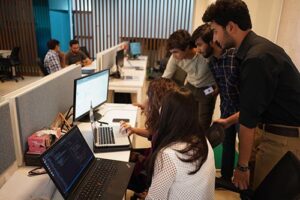
Dividends of US companies — Procter & Gamble, Motorola, Philip Morris, Caterpillar, Abbott, Pepsi and Coco Cola — are good in Pakistan. ExxonMobil has re-entered the Pakistani market; and Cargill has expressed its intent to invest $200 million in our agricultural sector, including food processing.
New opportunities for Pakistan-US cooperation are being explored in the areas of pharmaceutical industry, diagnostics, the health sector, digital economy, alternate energy, IT, FINTEC, and the green technology. Materialisation of these opportunities would depend on our greater understanding and resolution of issues related to data protection, intellectual property rights, ease of doing business and Pakistan’s exit from the Grey List of the Financial Action Task Force (FATF).
At the same time, we should consolidate the gains we have made in leveraging our economic geography by strengthening ties with China and faithfully implementing the China-Pakistan Economic Corridor. The CPEC gives us a platform to diversify our connectivity to Central Asia and South-West Asia. We should develop and integrate our national and regional supply chains, encompassing the entire cycle of production, distribution and consumption. What we need is connectivity on all sides. It is in this context that we should cast a fresh glance at the Turkmenistan-Afghanistan-Pakistan-India Pipeline, in which Russia is a tacit guarantor, if not a partner. The US-led investments in Afghanistan and Pakistan, by generating livelihoods and businesses, will more readily eliminate terrorism than military responses alone.
The Pakistan-European trade has received a boost from the Generalised Scheme of Preferences Plus (GSP Plus) mainly because of tariff preferences, subject to the implementation of 27 core international conventions on human rights, labour rights, environmental protection and good governance. The EU is one of Pakistan’s top trading partners; and the prospects for broader market access to the Union are bright. The European Commission recognises the potential of Pakistan’s economy but counts costs of doing business, restrictive regulatory regime, over-reliance on textiles and clothing and infrastructure bottlenecks as detrimental for trade and growth.
Pakistan announced its Vision East Asia Policy in 2003, in pursuit of economic diplomacy, but it has been pursued perfunctorily. Now is the time to engage with Japan and South Korea, on the one hand, and upgrade relations with the Association of South East Asian Nations (ASEAN), as well as bilateral trade and investment linkages with Malaysia, Indonesia, Brunei, Singapore, the Philippines and Thailand, on the other. Cambodia, Laos, Myanmar, and Vietnam — the group called CLMV — too are important. Despite Pakistan’s best efforts, it has not attained full partnership with ASEAN. However, that is not an absolute barrier for bilateral economic ties; since 2004, Pakistan, has been an active member of the ASEAN Regional Forum (ARF). By the way, the East Asian region is comparatively more hospitable to Pakistanis and Pakistani goods and services and its countries have always been keen on investing in Pakistan. Although Build Back Better World (B3W) is a Group of Seven (G7) initiative, perceived to be an alternative to the China-led Belt and Road Initiative (BRI), it cannot be 100 percent exclusive in the sense that those countries that are part of the BRI would not qualify for B3W; or vice versa. There would be opportunities for countries like Pakistan for tie-ins.
The Gulf countries have embraced geoeconomics with extraordinary zeal; and have speedily sloughed off geo-political fixtures and fixations. So, there is a confluence of two policy shifts — in the Gulf and Pakistan — that can be used to enhance their economic collaboration. There is a reason the Gulf countries are making this choice: they are forced to wean their economies from fossil fuels to make way for green, sustainable technologies. Besides, the COVID-19 pandemic has contracted their economies. That’s why they have decided, separately, to turn their countries into entrepreneurial hubs and international super-connectors. It has become imperative for them to diversify their economies and be competitive amongst Gulf peers in the fields of infrastructure, alternate energy, food industry, cyberspace and new technologies.
Pakistan’s relationships with the Gulf countries are already geoeconomic, especially in the areas of manpower working there, our dependence on oil and gas and agricultural exports. In the emerging scenario, we are still relevant to the Gulf markets and we can contribute to them by employing our human resources. With the growing human capital in Pakistan, we can find jobs in the niche markets or in major infrastructure projects and the service sectors. What’s more, we can attract Gulf investment to Pakistan. We can persuade the Gulf countries to relocate their excess capacity to Pakistan, open oil refineries and petrochemical complexes on our ports, and invest in agriculture, the construction industry and the blue economy. This would be possible if our delicate geopolitical balance between the Gulf countries and Iran continues to work.
Another economic frontier for Pakistan is Africa, especially in the African countries where Pakistan peacekeeping operations have served and where there is a sizeable presence of Pakistan’s diaspora community. Aware of the immense opportunities, the Government of Pakistan has launched its Engage Africa Policy and its Ministry of Commerce, under its Look East Africa Policy, has been making fresh efforts to promote trade between Pakistan and Africa. Many African economies are growing fast and that’s why Africa is being projected as the “Continent of the Future.” Even today, the size of Africa’s nominal GDP is $2.6 trillion, which is likely to grow rapidly in the future. Although Pakistan has been trading with many African countries, its share in Africa’s total trade volume of $1 trillion is less than $5 billion. There is rich potential to expand Pakistan’s exports of rice, engineering goods electrical appliances, textiles, clothing, pharmaceuticals, sports goods, surgical instruments, furniture and many more products to Africa. Similarly, Pakistan is a fertile market for African products and minerals. Other areas ripe for investments are science and technology, infrastructure development, telecommunications, agriculture and agroindustry.
It would be naïve to presume that geoeconomics can be divorced from geopolitics and pursued in isolation. Geopolitics, in fact, creates the enabling environment. Therefore, Pakistan will have to work on both fronts deftly with the realisation that our redemption as a nation lies in economic power, even to promote our geo-political agenda, which cannot be simply switched off. In any case, we should avoid imprudent and impolitic geostrategic activity that can be harmful to our national interests.
More importantly, we have to put our fiscal house in order. Unless we increase our revenues, we will not be able make the requisite technological changes to take our economy to the next level.
We should not envisage a future of perennial hostility with our eastern neighbour, though settlement of outstanding conflicts is necessary for economic cooperation with it. But until we get a window into South Asia, we should continue to maximize our chances of economic success through partnerships with East Asia, West Asia, Africa, Europe and North America. Finally, the projected geoeconomic shift requires a low profile, an altered national mindset, hard choices and, above all, strong political will.
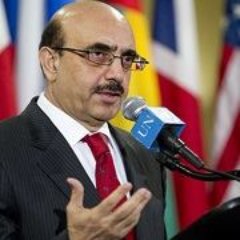
The writer is Pakistan’s new envoy to the US. He is the former President of Azad Jammu and Kashmir and has also served as the country’s ambassador in China.


